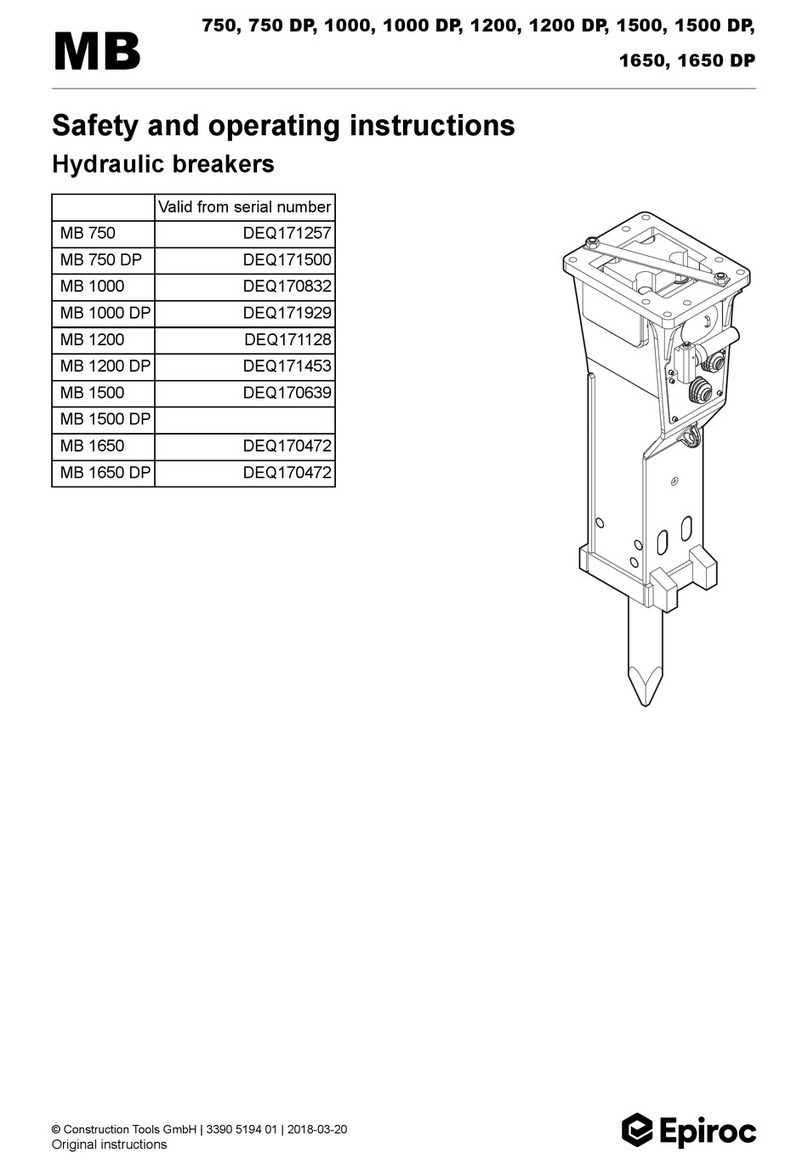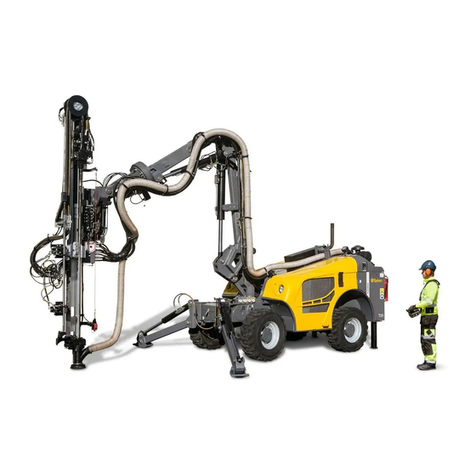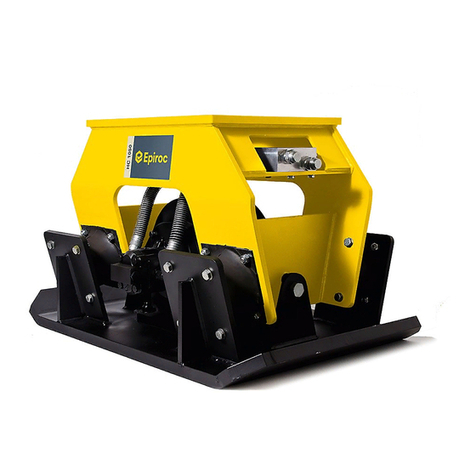Epiroc SmartROC T35 User manual

SmartROC T35/T40
Safety
Original Instructions
2018-03-09 | No: 5966599819.1.5966707083 en-US


SmartROC T35/T40 Table of Contents
iii No: 5966599819.1.5966707083 en-US
Table of Contents
1 Introduction ........................................................................................................... 5
1.1 The Purpose of the Safety Manual ...........................................................................................5
1.2 Target Group ..............................................................................................................................5
1.3 Safety Messages in Publications..............................................................................................5
1.4 Feedback and Contact Information ..........................................................................................6
2 Product Liability .................................................................................................... 7
3 Risks and Hazards ................................................................................................ 9
3.1 Stored Energy Hazard................................................................................................................9
3.2 Burn Hazard................................................................................................................................9
3.3 Entanglement and Shearing Hazard.......................................................................................10
3.4 Crushing Hazard ......................................................................................................................10
3.5 Tipping Hazard .........................................................................................................................11
3.6 Scalding Hazard .......................................................................................................................11
3.7 Wire Rope Break Hazard .........................................................................................................12
3.8 Pressurized Systems Hazard ..................................................................................................12
3.9 Hazard Zone..............................................................................................................................12
3.10 Work Requiring Special Authorization...................................................................................13
4 Safety Precautions.............................................................................................. 15
4.1 General Safety Guidelines.......................................................................................................15
4.2 Personal Protection .................................................................................................................15
4.3 Safety During Lifting, Installing, and Connecting.................................................................16
4.4 Safety Precautions during Tramming ....................................................................................16
4.5 Safety Precautions during Operation.....................................................................................16
4.6 Safety Precautions during Service and Maintenance...........................................................17
4.7 Safety Guidelines, Working with Pressurized Components ................................................17
4.8 Safety Guidelines, Working with Compressor ......................................................................17
5 Safety Functions ................................................................................................. 19
5.1 Emergency Stop.......................................................................................................................19
5.1.1 Location of Emergency Stop ..................................................................................................19
5.1.2 Resetting Emergency Stop.....................................................................................................21
5.2 Guard.........................................................................................................................................22
5.3 FOPS and ROPS.......................................................................................................................22
5.4 Firefighting Equipment............................................................................................................23
5.4.1 Fire Prevention Readiness .....................................................................................................23
5.4.2 Automatic Fire Suppression System ......................................................................................23
5.4.3 Description of Fire Extinguishers............................................................................................24
5.4.4 Location of Fire Extinguishers ................................................................................................24
5.4.5 In Case of Fire - Fire Extinguisher..........................................................................................25
5.4.6 Actions after Fire ....................................................................................................................25
5.5 Emergency Exit ........................................................................................................................26
6 Warning Signals .................................................................................................. 27
6.1 Warning Beacon.......................................................................................................................27

SmartROC T35/T40 Table of Contents
iv No: 5966599819.1.5966707083 en-US
6.2 Warning Beacon - Automatic Systems ..................................................................................28
6.3 Signal Horn Button Location ..................................................................................................28
7 Noise and Vibration ........................................................................................... 31
7.1 Noise Levels and Vibration Values.........................................................................................31
7.2 Declared Values .......................................................................................................................31
7.3 Causes of High Noise Levels ..................................................................................................32
7.4 Effects of Noise ........................................................................................................................32
7.5 Noise Reduction Factors.........................................................................................................32
7.6 Noise Combined with Other Risk Factors .............................................................................32
7.7 Factors Affecting Whole Body Vibration ...............................................................................33
7.8 Vibration Reduction .................................................................................................................33
8 Signs .................................................................................................................... 35
8.1 General Guidelines .................................................................................................................35
8.2 Warning Signs ..........................................................................................................................35
8.3 Mandatory Action Signs ..........................................................................................................36
8.4 Prohibition Signs .....................................................................................................................37
8.5 Information Signs.....................................................................................................................37
8.6 Fire Equipment Signs ..............................................................................................................38
8.7 Data Plate..................................................................................................................................39
8.8 Type Designation Signs for Ordering Spare Parts ...............................................................39
9 Stability ................................................................................................................ 41
9.1 Spirit Level................................................................................................................................41
10 Environmental Protection .................................................................................. 43
10.1 Environmental Guidelines.......................................................................................................43
10.2 Oils and Greases......................................................................................................................43
10.3 Fuel Spill ...................................................................................................................................43
10.4 Exhaust Gases .........................................................................................................................43
10.5 Handling of Spills and Waste during Maintenance...............................................................43
10.6 End-User Responsibility during Disposal of the Machine ...................................................44
11 EC - Declaration of Conformity.......................................................................... 45

SmartROC T35/T40 1 Introduction
5 No: 5966599819.1.5966707083 en-US
1 Introduction
1.1 The Purpose of the Safety Manual
This Safety manual contains important information that must be followed to prevent acci-
dents and property damage while working with and around the machine. The manual is de-
signed to do the following:
•Provide information on how to detect and prevent hazardous situations
•Provide information about the safe, correct, and economical use of the machine and
related equipment
•Provide information on risks involved and the hazard zones
•Provide information on safety equipment and the safety signs posted on the machine
•Provide information about environmental regulations
This manual is one part of the complete machine delivery and its related equipment.
This manual does not replace the necessary training that is required for the handling of the
machine and its related equipment.
The information in this manual and all applicable local regulations must be followed.
1.2 Target Group
The information in this publication is intended for everyone involved in the application, op-
eration, and maintenance of the machine and related equipment. All readers are expected
to possess basic competence regarding mining methods, construction methods, and the
machines used for that kind of operation.
1.3 Safety Messages in Publications
Safety messages in publications declare hazards and the related measures to avoid the
hazards in that particular situation. The safety messages contain signal words (Danger,
Warning, Caution, and Notice) that relate to the consequences of those specific hazards.
The information in safety messages must always be followed.
The following are examples of how safety messages are structured. Safety messages con-
tain:
•Signal word (determining the degree of the hazard)
•Hazard - stating what the hazard deals with (rotating parts, tipping hazard)
•Consequence of the hazard, if not avoided
•Explanation on how to avoid the hazard
DANGER
Hazard
The signal word "DANGER" indicates a hazardous situation which, if not avoided, will
result in death or serious injury.
uHow to avoid the hazard is written here
Other manuals for SmartROC T35
1
This manual suits for next models
1
Table of contents
Other Epiroc Construction Equipment manuals
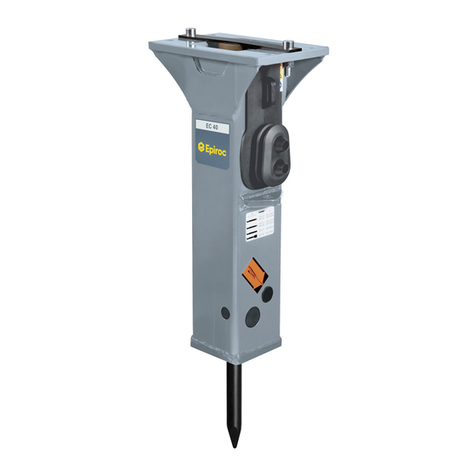
Epiroc
Epiroc EC Series Maintenance and service guide
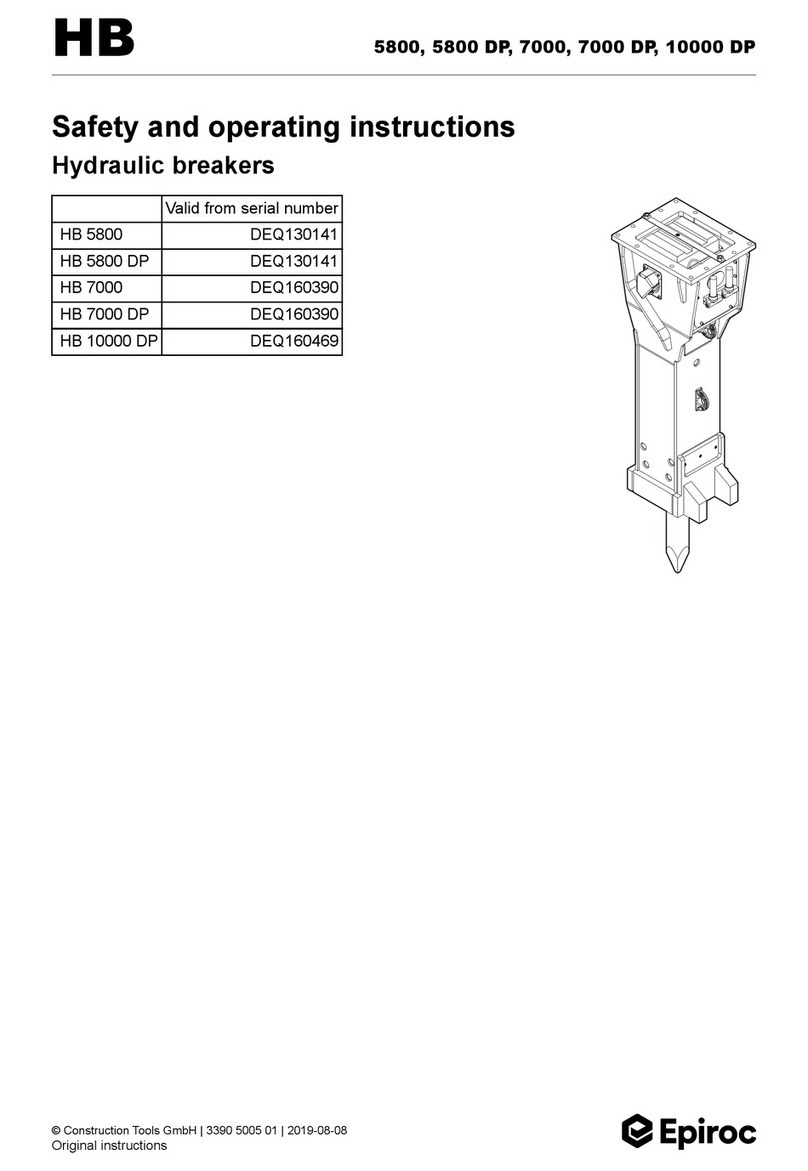
Epiroc
Epiroc DEQ130141 Maintenance and service guide
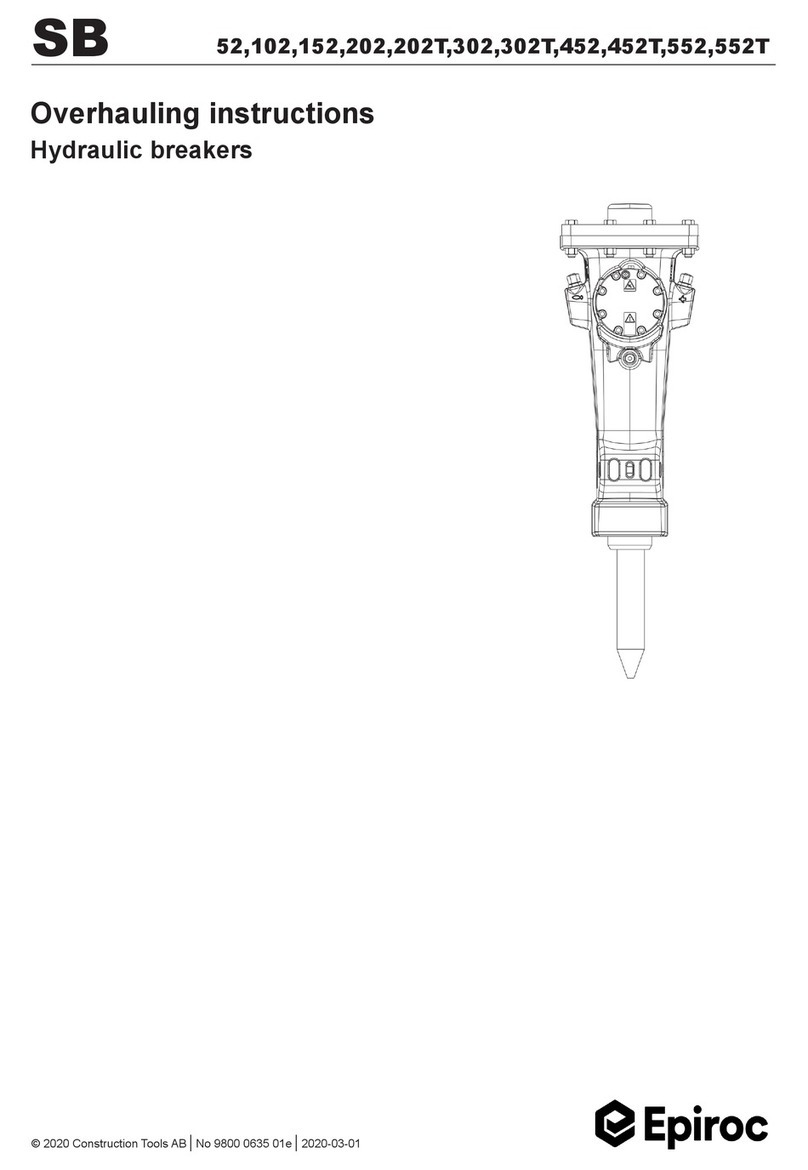
Epiroc
Epiroc SB 52 User manual
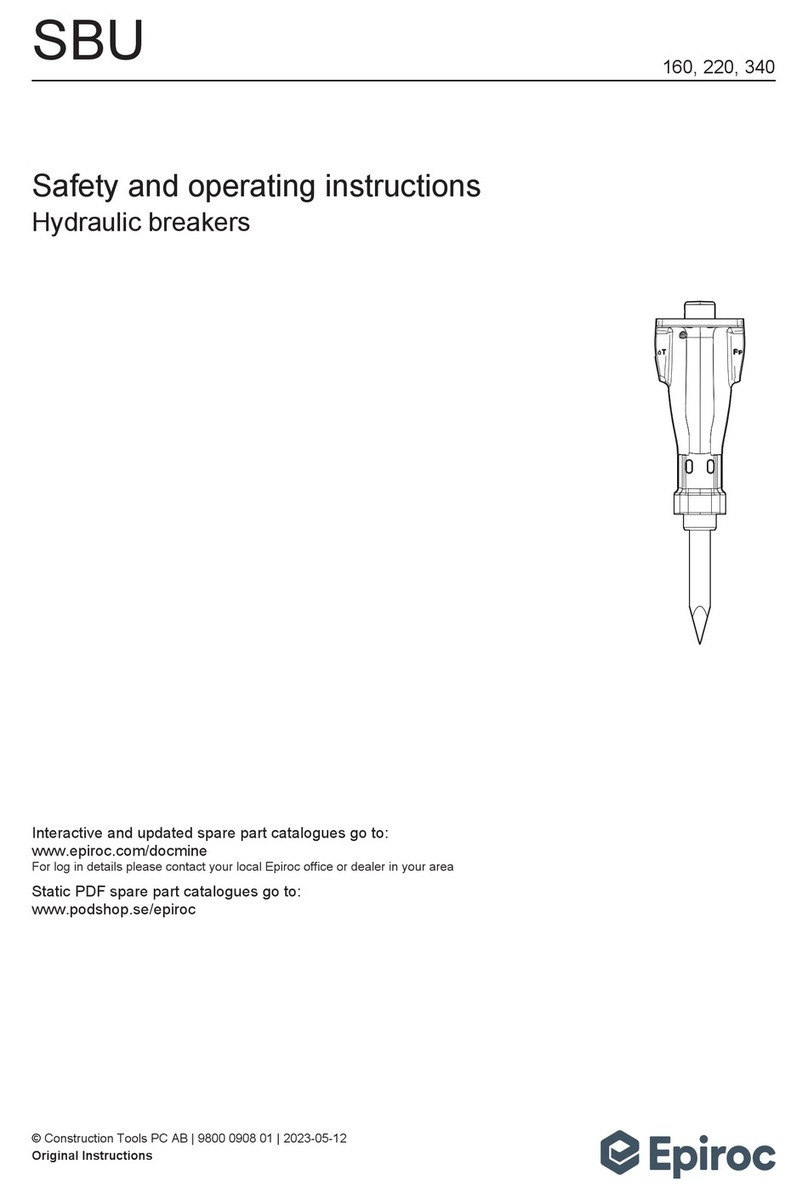
Epiroc
Epiroc SBU 160 Maintenance and service guide

Epiroc
Epiroc Secoroc COP 54 User manual

Epiroc
Epiroc COP M6 Specifications
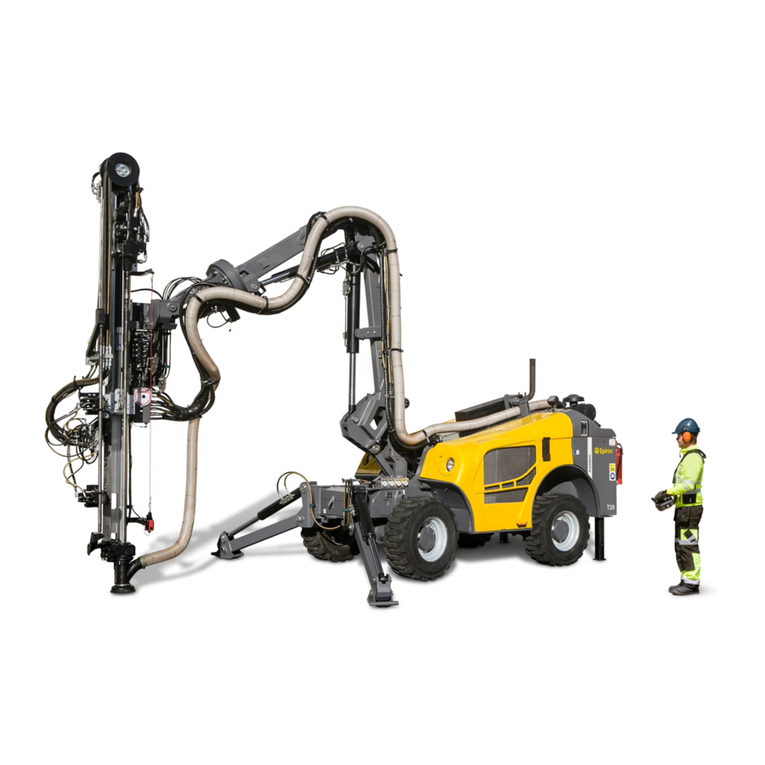
Epiroc
Epiroc Flexi ROC T20 R Instructions for use

Epiroc
Epiroc Secoroc COP 44 Specifications

Epiroc
Epiroc EC 90T User manual
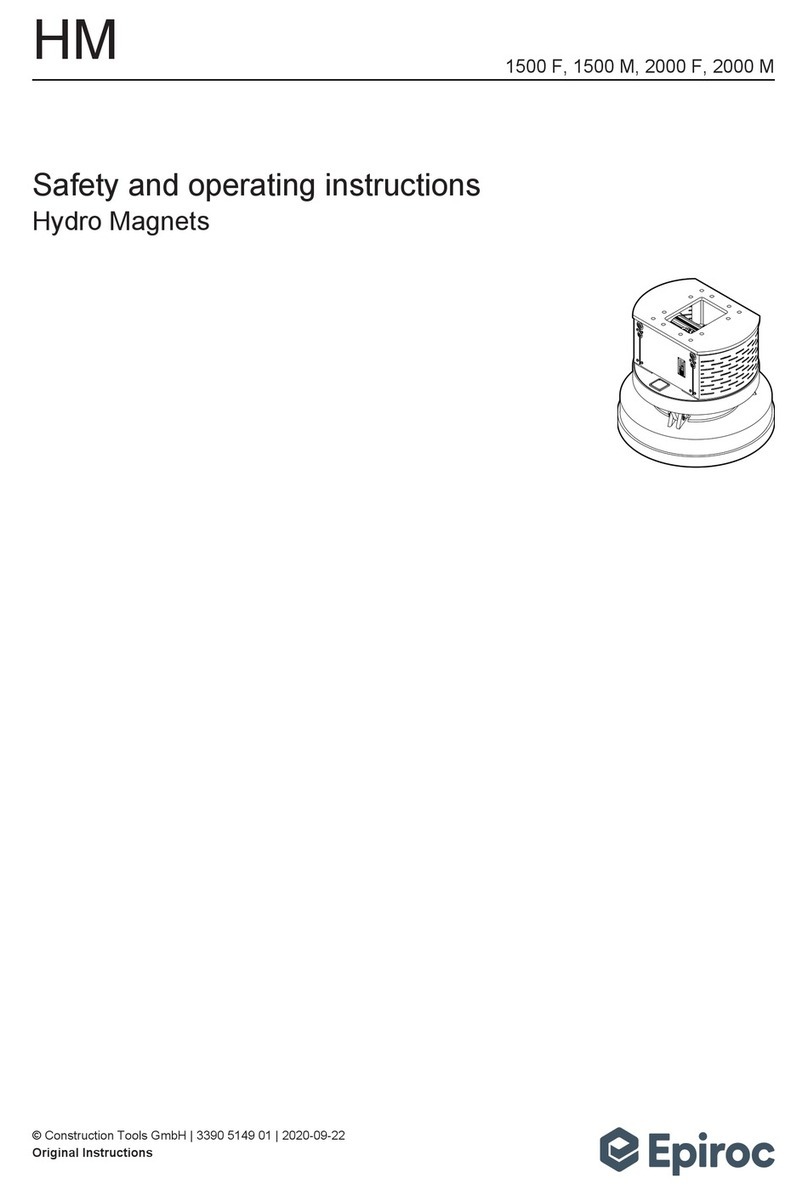
Epiroc
Epiroc HM Series Maintenance and service guide
